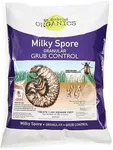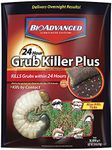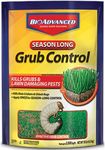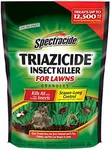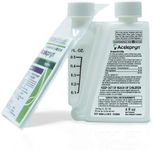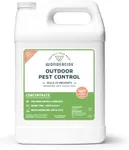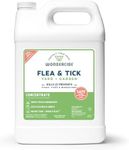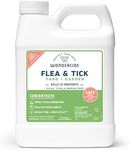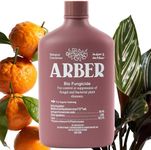Buying Guide for the Best Grub Killers
Choosing the right grub killer for your lawn or garden is essential to maintaining a healthy and vibrant outdoor space. Grubs can cause significant damage to grass and plants by feeding on their roots, leading to brown patches and weakened vegetation. To effectively manage and eliminate grubs, it's important to understand the key specifications of grub killers and how they align with your specific needs. Here are the main factors to consider when selecting a grub killer.Active IngredientThe active ingredient in a grub killer is the chemical component that targets and kills the grubs. Common active ingredients include imidacloprid, chlorantraniliprole, and carbaryl. Each has different levels of effectiveness and environmental impact. Imidacloprid is widely used and effective but can be harmful to beneficial insects like bees. Chlorantraniliprole is effective and has a lower impact on non-target species. Carbaryl is a broad-spectrum insecticide that can be very effective but may also affect other insects. Choose an active ingredient based on the severity of your grub problem and your environmental concerns.
Application MethodGrub killers come in various forms, including granules, liquid sprays, and ready-to-use products. Granules are easy to apply with a spreader and are ideal for large areas. Liquid sprays can provide more immediate results and are suitable for spot treatments or smaller areas. Ready-to-use products are convenient and require no mixing or special equipment. Consider the size of the area you need to treat and your preference for application when choosing a method.
Timing of ApplicationThe timing of grub killer application is crucial for effectiveness. Grubs are most vulnerable in their early stages, typically in late summer to early fall. Some products are designed for preventive use in the spring, while others are curative and should be applied when grubs are actively feeding. Determine whether you need a preventive or curative treatment based on the time of year and the presence of grubs in your lawn.
Coverage AreaThe coverage area indicates how much ground a product can treat. This is usually measured in square feet or square meters. Ensure that the product you choose can cover the entire area you need to treat. For larger lawns, you may need a product with a higher coverage capacity or multiple packages. Always follow the manufacturer's instructions for application rates to avoid overuse or underuse.
Environmental ImpactConsider the environmental impact of the grub killer you choose. Some products may be harmful to beneficial insects, pets, or aquatic life. Look for products that are labeled as environmentally friendly or have a lower toxicity level. If you have pets or children who play on the lawn, opt for a product that is safe for use around them. Additionally, consider the impact on local wildlife and water sources when making your selection.
Ease of UseEase of use is an important factor, especially if you are not experienced with applying lawn treatments. Some products require mixing or special equipment, while others are ready to use straight out of the package. Choose a product that matches your comfort level and experience with lawn care. If you prefer a hassle-free option, look for products that are easy to apply and require minimal preparation.


